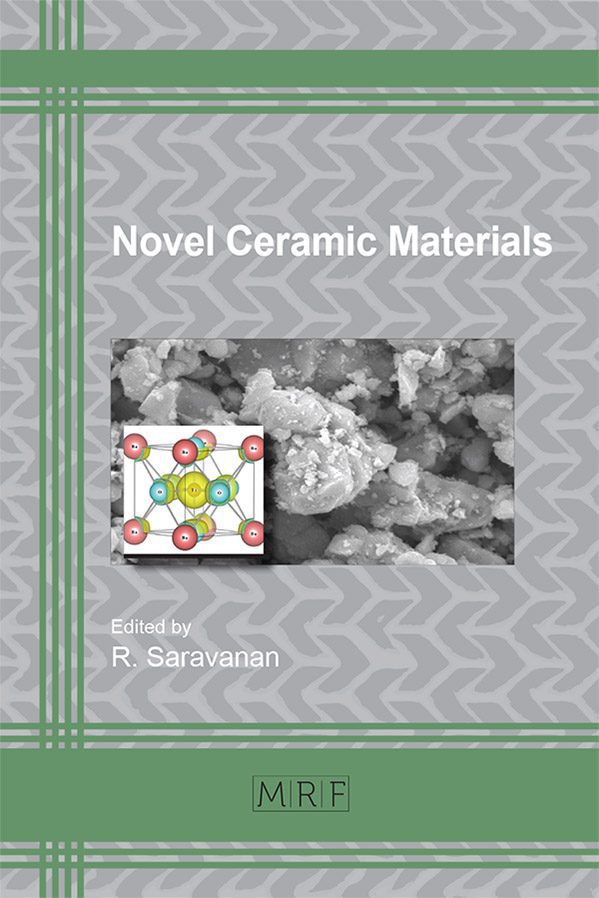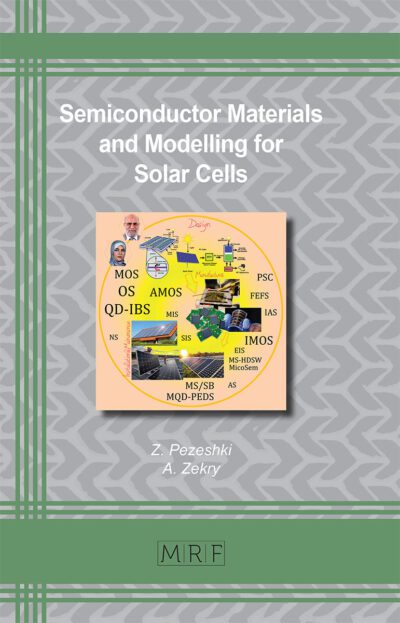Synthesis and Characterization of Al2TiO5-TiO2-Al2O3 Ceramics: Correlation with Charge Density
S.V. Meenakshi, R. Saravanan
Al2TiO5-TiO2-Al2O3 ceramic material has been synthesized using solid state reaction at 1500 °C. The prepared ceramic sample was characterized using XRD and SEM. The charge density distribution of the ceramic has been constructed using the maximum entropy method (MEM). Using the electron density distribution, the nature of the bonding is discussed and is used to explain the properties of the synthesized ceramics. SEM images are used to find the aggregate particle size. The UV-Vis absorption spectrum and the dielectric characteristics are also done to discuss the nature of the sample.
Keywords
Al2TiO5, TiO2, Al2O3, Ceramics, Charge Density
Published online 6/1/2016, 12 pages
DOI: 10.21741/9781945291036-7
Part of Novel Ceramic Materials
References
[1] R.D. Skala, D. Li. L.M. Low Diffraction, Structure and phase stability studies on Aluminium titanate J. European ceramic society 29 (2009) 67-75.
http://dx.doi.org/10.1016/j.jeurceramsoc.2008.05.037
[2] N. Claussen, J. Steeb, R.F. Pabst. Am. ceram. Soc. Bull. 56 (1977) 559-569.
[3] T. Shimazu, M. Miura, N. Ishu, T. Ogawa, K. Ota, H. Maeda, E.H. Ishida. J. msea. 487 (2008) 340-346.
http://dx.doi.org/10.1016/j.msea.2007.10.026
[4] Hyung chul kim, Kaesung Lee, Ohseong kweon, Christos G.Aneziris, I.K.Jin kim. J. Eur. Ceram. Soc. 27 (2007) 1431-1434.
http://dx.doi.org/10.1016/j.jeurceramsoc.2006.04.024
[5] S. Kumazawa, Y Kubota, M. Takata, M.Sakata and Y.Ishibashi J. Appl. Cratallogr.26 (1993)453.
http://dx.doi.org/10.1107/S0021889892012883
[6] Izumi F and Dilanian R.A, Recent Research Developments in Physics Vol 3 Part II (Trivandrum Transworld Research Network) (2002) 699-726.
[7] Momma K and Izumi F Commission on Crystallographic Computing, IUCr News letter 7 (2006) 106.
[8] H.M. Reitveld, J. Appl. Crystallogr. 2 (1969) 65-71.
http://dx.doi.org/10.1107/S0021889869006558
[9] V. Petricek, M. Ducek and L. palatines JANA 2006. The crystallographic computing system, Institute of Physics, Praha, Czech Republic (2006).
[10] Luca Lutterotti Instrumental broadening determination Universita’ di Trento 38050 Trento, Italy (2006).
[11] JCPDS CAS No. 26-0040.
[12] T. Hahn, Netherlands (The international Union of Crystallography, Springer), Space Group Symmetry, International Tables for Crystallography, Vol. A, 5th ed., edited by T. Hahn (2005) 584-585.
[13] R. Saravanan Practical application of Maximum entropy method in electron density and studies Phys. Scr. 79 (2009) 048303.
http://dx.doi.org/10.1088/0031-8949/79/04/048303
[14] D M Collins 1982 Electron density images from imperfect data by iterative entropy maximization Nature. 298 49.
http://dx.doi.org/10.1038/298049a0
[15] W. Jauch The maximum entropy method in charge density studies. II. General aspects of reliability Acta Crystallogr. A 50 (1994) 650.
http://dx.doi.org/10.1107/S0108767394004472
[16] A.K. Livesey and J Skilling Maximum entropy estimate of electron density function Acta Crystallogr. A 41(1985) 232.
http://dx.doi.org/10.1107/S0108767385000526
[17] L. Giordano, M. Viviani, C. Bottino, M.T. Buscaglia, V. Buscaglia, P. Nanni. J Eur. Ceram. Soc. 22 (2002) 1811-1822.
http://dx.doi.org/10.1016/S0955-2219(01)00503-9
[18] P. Scardi, L. Lutterotti, Maistrelli, Powder diffr., 9(3) (1994) 180-186.
http://dx.doi.org/10.1017/S0885715600019187
[19] R.A. Young, editor, The Rietveld method, IUCr, Oxford university Press, Oxford, UK, 1993.
[20] Davor Balzar, Nicolac C.Popa Analyzing microstructure by Rietveld refinement. J. Rigaku 22(1) (2005) 16-25.
“>

































